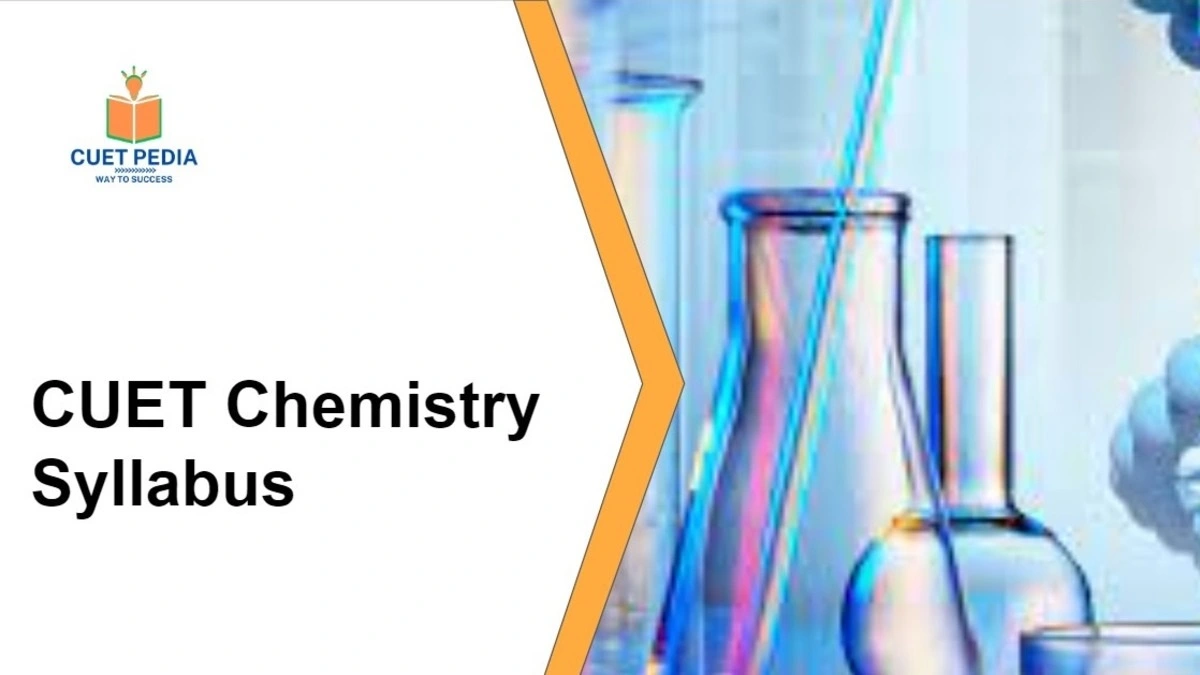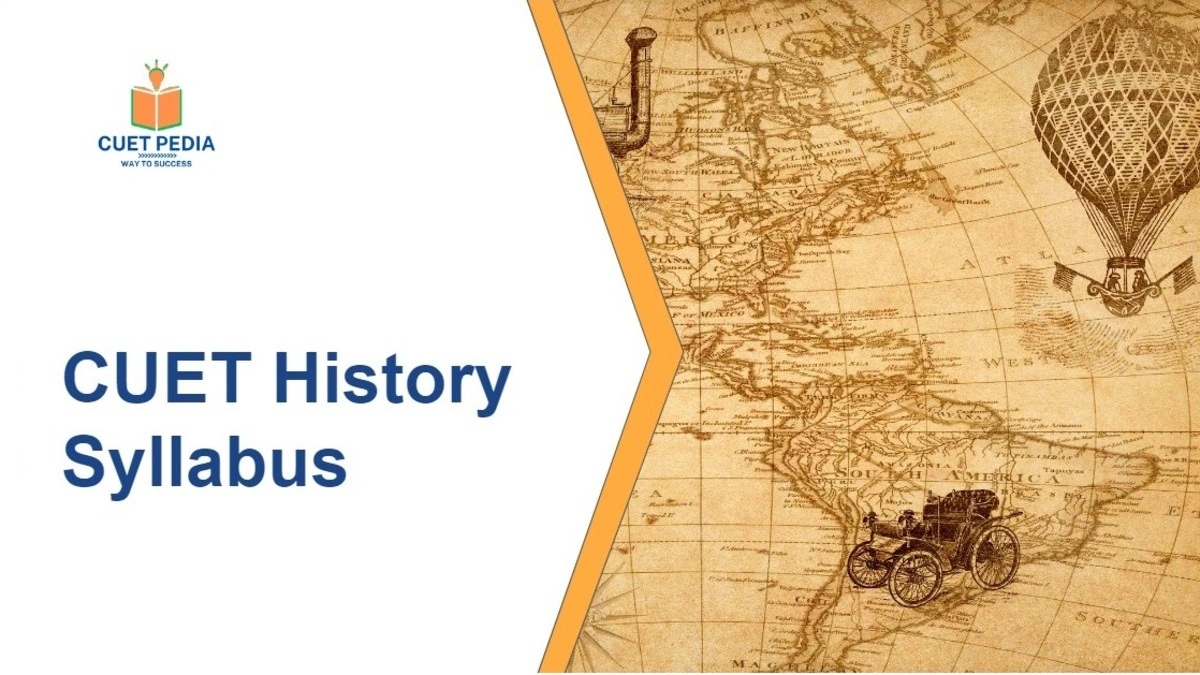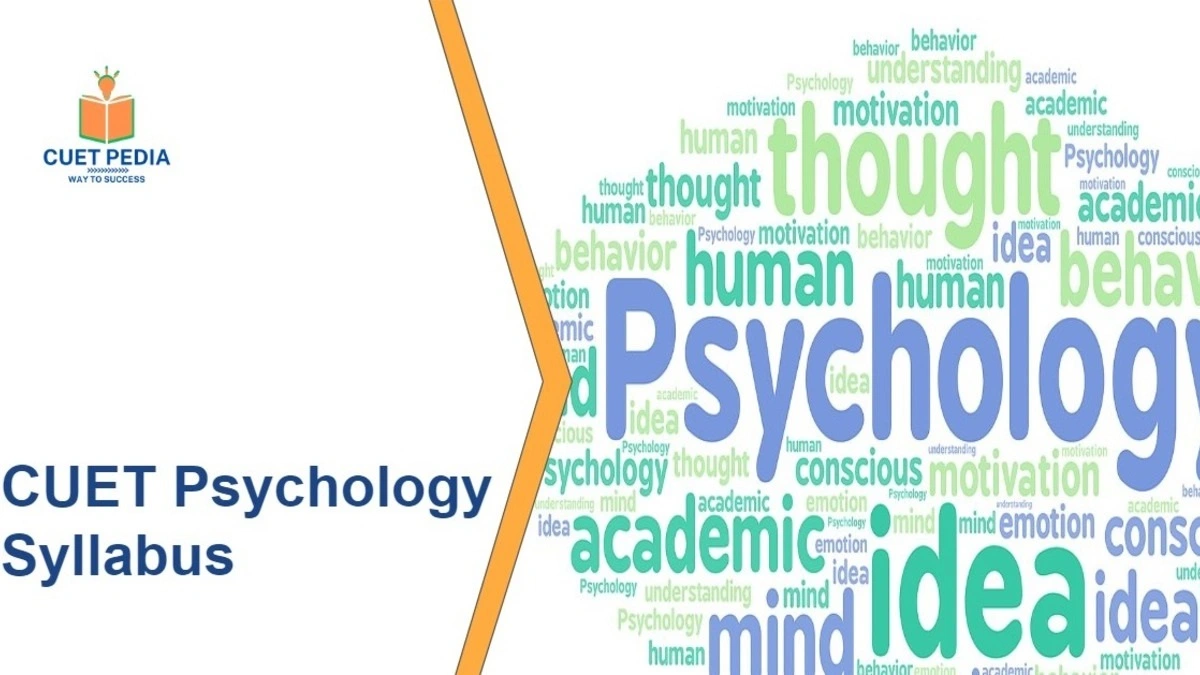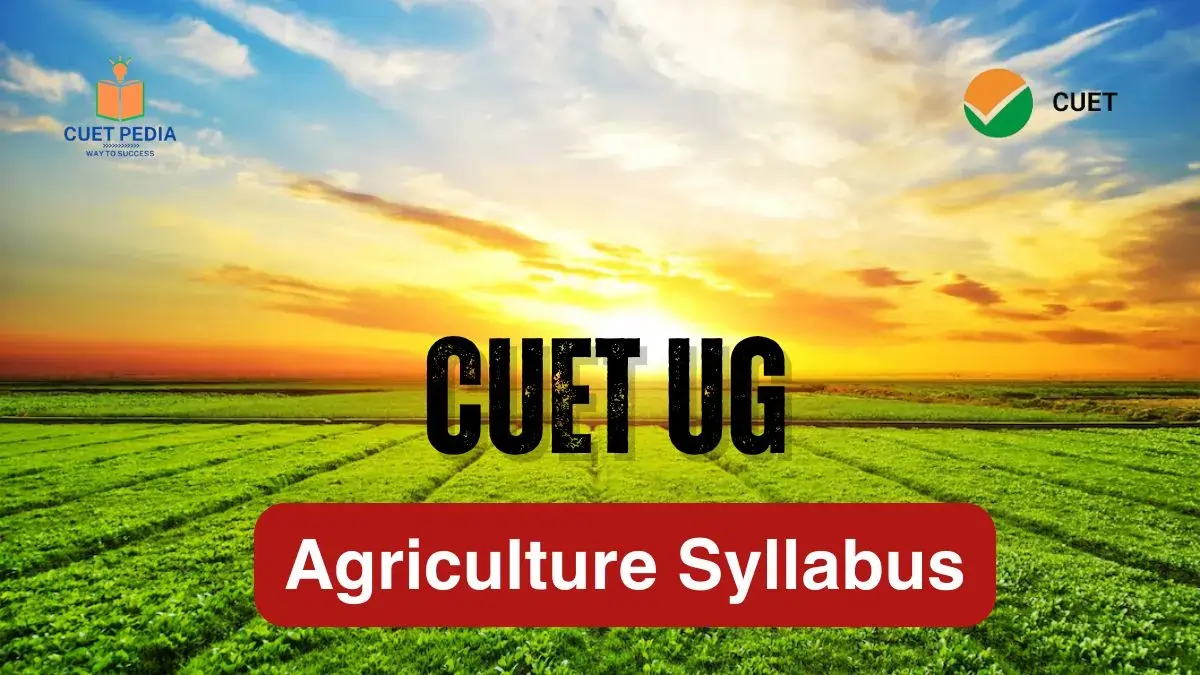CUET Chemistry Syllabus 2025: Chemistry is one of the subjects being offered for CUET domain subjects for science students. The topics are complex and extensive and need to be dealt with care. Candidates taking the exam must review the CUET UG chemistry syllabus to prepare well for the exam. Those who intend to pursue their undergraduate degrees in a chemistry-related course, Bachelor of Science (Chemistry) or another type of specialized chemistry must appear for the exam.
CUET Chemistry Syllabus 2025
Applicants are required to stay updated with the latest CUET chemistry exam syllabus on the NTA website. Recently, the topics for all CUET subjects underwent revision. Applicants taking chemistry in section 2 must review the unit-wise chemistry syllabus to prepare for the exam and achieve their desired results properly.
Using the link provided below, get the CUET chemistry syllabus PDF. It will assist you in gaining an in-depth understanding of the subjects on which the questions will be based.
CUET Chemistry Syllabus 2025 PDF
Candidates can get the CUET chemistry syllabus PDF using the link below. The PDF needs to be downloaded and stored on the device. Here you can download the domain-specific chemistry syllabus PDF in Hindi and English.
Units in CUET UG Chemistry Syllabus
There are 16 units in the chemistry domain subject CUET syllabus, making it one of the vast subjects. Aspirants need to focus on all the topics given here to ace the chemistry domain-specific section.
- Solid State
- Solutions
- General Principles and Processes of Isolation of Elements
- Surface Chemistry
- Electrochemistry
- Chemical Kinetics
- p-Block Elements
- Haloalkanes and Haloarenes
- d and f Block Elements
- Alcohols, Phenols, and Ethers
- Coordination Compounds
- Organic Compounds Containing Nitrogen
- Aldehydes, Ketones, and Carboxylic Acids
- Biomolecules
- Chemistry in Everyday Life
- Polymers
Unit-wise CUET UG Chemistry Syllabus 2025
Candidates must check the unit-wise chemistry Syllabus. The knowledge of each section is important for the candidates as this helps them in making a holistic CUET preparation strategy.
Units | Topics |
Solid State | Classification of solids based on different binding forces: molecular, ionic covalent, and metallic solids, amorphous and crystalline solids(elementary idea), unit cell in two-dimensional and three-dimensional lattices, calculation of density of unit cell, packing in solids, packing efficiency, voids, number of atoms per unit cell in a cubic unit cell, point defects, electrical and magnetic properties, Band theory of metals, conductors, semiconductors and insulators and n and p-type semiconductors. |
Solutions | Types of solutions, expression of concentration of solutions of solids in liquids, the solubility of gases in liquids, solid solutions, colligative properties – the relative lowering of vapour pressure, Raoult’s law, the elevation of B.P., depression of freezing point, osmotic pressure, determination of molecular masses using colligative properties, abnormal molecular mass, Vant Hoff factor. |
Electrochemistry | Redox reactions; conductance in electrolytic solutions, specific and molar conductivity variations of conductivity with concentration, Kohlrausch’s Law, electrolysis and laws of electrolysis (elementary idea), dry cell – electrolytic cells and Galvanic cells; lead accumulator, EMF of a cell, standard electrode potential, Nernst equation and its application to chemical cells. Relation between Gibbs energy change and EMF of a cell, fuel cells; corrosion |
Chemical Kinetics | Rate of a reaction (average and instantaneous), factors affecting rates of reaction: concentration, temperature, catalyst; order and molecularity of a reaction; rate law and specific rate constant, integrated rate equations, and half-life (only for zero and first-order reactions); the concept of collision theory (elementary idea, no mathematical treatment). Activation energy, Arrhenius equation. |
Surface Chemistry | Adsorption – physisorption and chemisorption; factors affecting adsorption of gases on solids; catalysis: homogenous and heterogeneous, activity and selectivity: enzyme catalysis; colloidal state: the distinction between true solutions, colloids, and suspensions; lyophilic, lyophobic multimolecular and macromolecular colloids; properties of colloids; Tyndall effect, Brownian movement, electrophoresis, coagulation; emulsions – types of emulsions. |
| General Principles and Processes of Isolation of Elements | Principles and methods of extraction – concentration, oxidation, reduction, electrolytic method, and refining; occurrence and principles of extraction of aluminum, copper, zinc, and iron. |
p-Block Elements | Principles and methods of extraction – concentration, oxidation, reduction, electrolytic method, and refining; occurrence and principles of extraction of aluminium, copper, zinc, and iron. |
|
d and f Block Elements | Introduction, ligands, coordination number, colour, magnetic properties and shapes, IUPAC nomenclature of mononuclear coordination compounds, bonding, Werner’s theory VBT, CFT; isomerism (structural and stereo) importance of coordination compounds (in qualitative analysis, extraction of metals and biological systems). |
|
Coordination Compounds | Introduction, ligands, coordination number, colour, magnetic properties and shapes, IUPAC nomenclature of mononuclear coordination compounds, bonding, Werner’s theory VBT, CFT; isomerism (structural and stereo) importance of coordination compounds (in qualitative analysis, extraction of metals and biological systems). |
|
Haloalkanes and Haloarenes |
|
|
Alcohols, Phenols, and Ethers |
|
|
Aldehydes, Ketones, and Carboxylic Acids |
|
|
Organic Compounds Containing Nitrogen |
|
|
Biomolecules |
|
|
Polymers | Classification – Natural and synthetic, methods of polymerization (addition and condensation), copolymerization. Some important polymers: are natural and synthetic, like polythene, nylon, polyesters, bakelite, and rubber. Biodegradable and non-biodegradable polymers. |
|
Chemistry in Everyday Life |
|
How to Prepare CUET Chemistry Syllabus?
Aspirants must check the preparation tips for the chemistry syllabus for CUET to outrank the competitors. With the aid of these suggestions, several candidates passed the test in past years.
- Make a workable, useful study plan according to CUET Exam Pattern.
- Divide the course material into three to four large, distinct modules.
- Keep to the NCERT book and read all of the provided material.
- Take precise, unambiguous notes, and refer to them as needed.
- Conduct your research in areas where the book falls short.
- If there are any CUET Chemistry question papers, pay attention to the types of questions that will be asked and prepare accordingly.
Best Books for CUET Chemistry Syllabus 2025
Look at the recommended Chemistry books for the syllabus. Experts advise reading these books to perform well on the exam.
- Chemistry: The Central Science.
- Chemistry: A Molecular Approach.
- General Chemistry: The Essential Concepts.
- General Chemistry: Principles and Modern Applications.
- Chemistry: An Introduction to General, Organic, and Biological Chemistry, Global Edition.
Also Check,
CUET UG Chemistry Syllabus FAQs
The Chemistry syllabus consists primarily of the topics taught in classes 11 and 12. You must complete 16 units included in the syllabus if you plan to take the chemistry subject in the domain-specific part of the CUET.
Yes! It is certainly a part of the chemistry syllabus for CUET exam, which is asked in the domain-specific section. Candidates can download the CUET chemistry syllabus PDF to understand the topics better.
The chemistry domain paper is anticipated to have a moderate degree of difficulty. However, students should also adequately prepare for a challenging paper by studying the chemistry CUET syllabus, which is also a remote possibility.
According to the most recent syllabus PDF made available by the NTA, the Chemistry Syllabus consists of 16 units. These units must be a part of the chemistry CUET preparation.
The NCERT reference book is officially recommended as the one to use for the CUET UG chemistry syllabus. Applicants may view the CUET Books here, which will aid them in achieving high exam scores.








